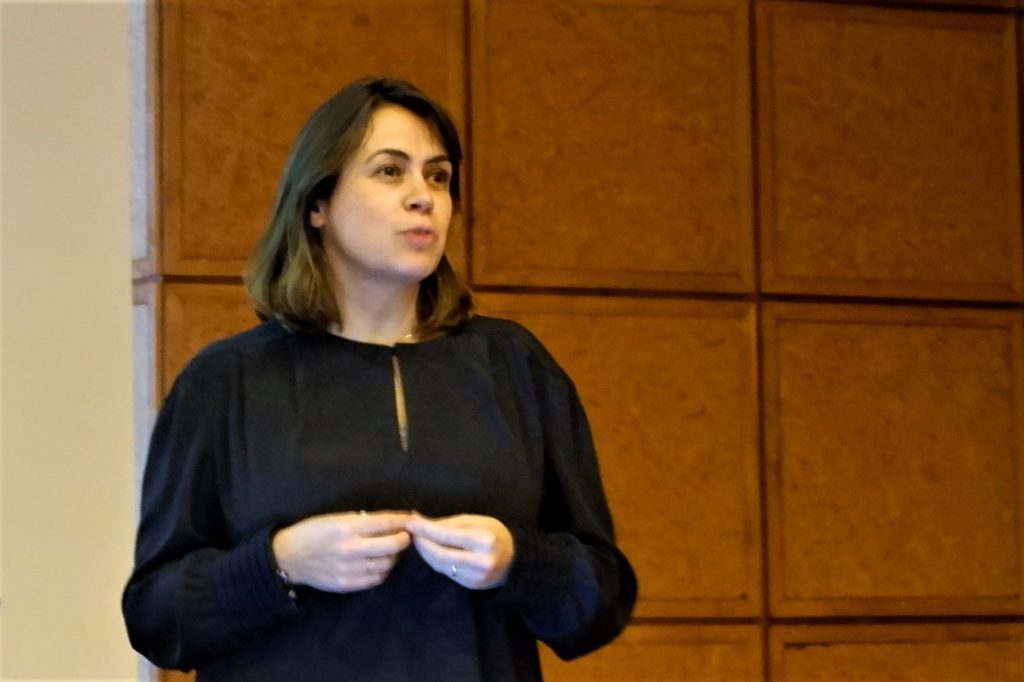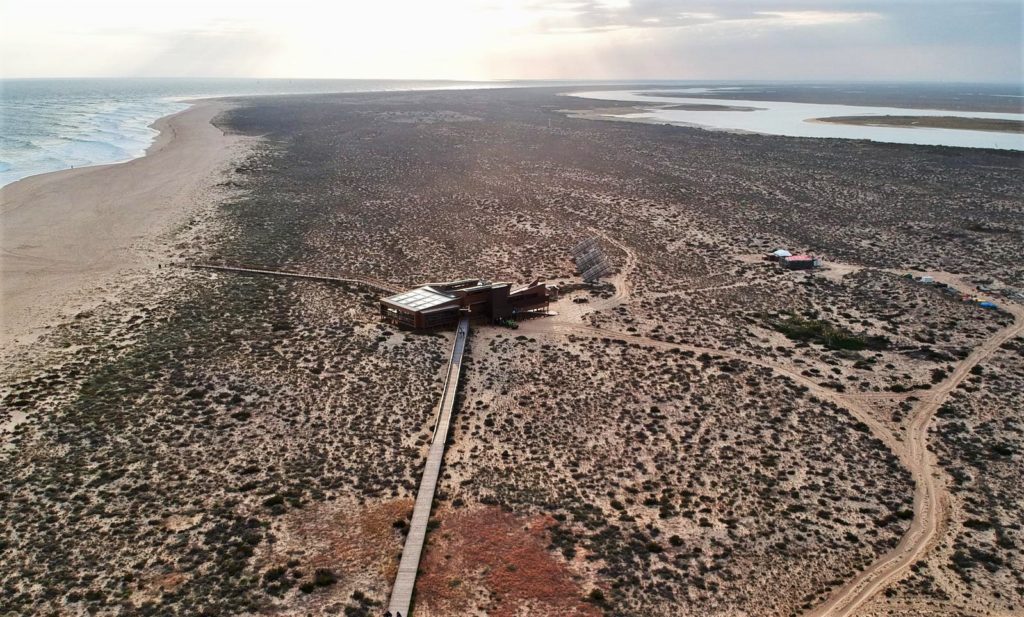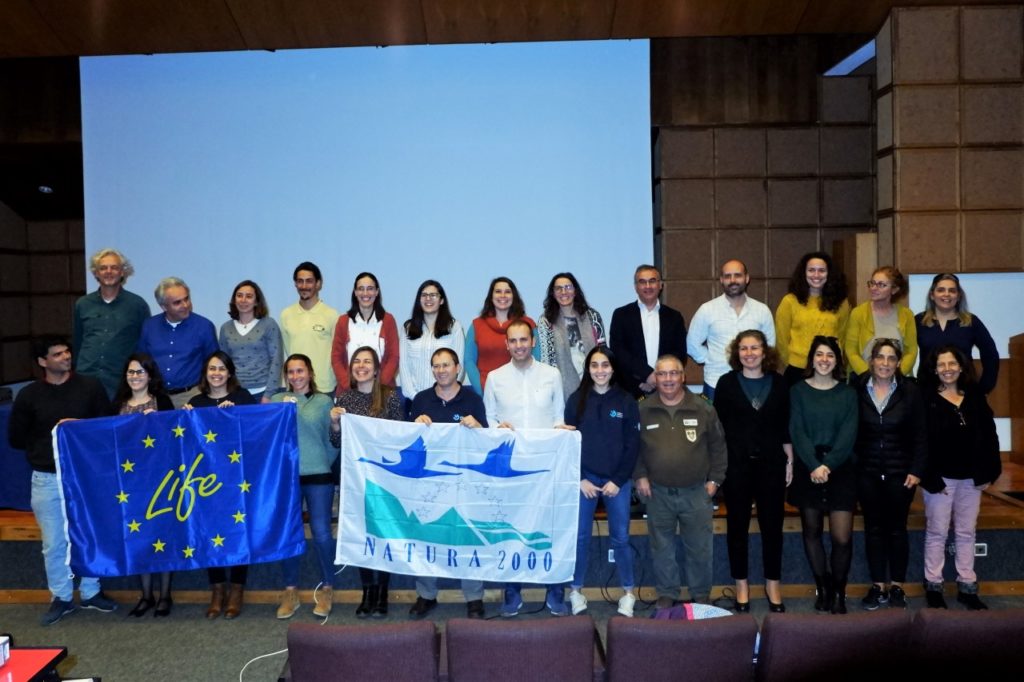Mitigating the risks that hang over already threatened seabird species, preserving the habitats they use to nest, which are considered priorities, and providing better conditions for the Wildlife Recovery and Investigation Center (RIAS) to help them are three of the great objectives of the LIFE Ilhas-Barreira project, which was presented yesterday in Olhão.
Coordinated by the Portuguese Society for the Study of Birds (SPEA), this initiative brings together a wide range of local partners, but also from outside the Algarve region, who came together to «generally promote the conservation of barrier islands through protection of seabird species and priority habitats'.
More than an intervention that will last four years, this project intends to leave seeds for the future. For this, SPEA has, among others, the RIAS, which will take advantage of LIFE Ilhas-Barreira to take a qualitative leap.
«Our idea is to enable the RIAS response, especially in terms of the recovery of seabirds. The center has some limitations in terms of tank areas that allow the recovery of these birds, which need water. We will, with this project, improve this capacity», he revealed to the Sul Informação Joana Andrade, from SPEA, the project coordinator.
On the other hand, the RIAS will investigate “to understand what is causing the mortality of seagulls and other marine species that has been occurring in recent times, so that, with this information, we can act and prevent these problems”.

Fábia Azevedo, director of the RIAS, says, for her part, that the center's objective is “to increase the success rates of recovery of seabirds by 20%” over the next four years.
RIAS will also play a key role in environmental education. «They are the ones who will dynamize the actions with the school public and, being a place that receives visitors, they will also be able to sensitize them to these issues», said Joana Andrade.
With regard to the school public, the goal is quite ambitious, since the promoters of this LIFE want to pass the message on to around 20 thousand students from all schools in the five municipalities covered by the Ria Formosa – Loulé, Faro, Olhão, Tavira and Vila Real de Santo António.
All this to ensure the conservation and mitigation of risks for seabirds that occur in the Ria Formosa.
«We have, here on the barrier islands, seabirds that nest, especially on Deserta Island [Barreta], which is the only one that is not inhabited. Many of the actions will take place on this island», said Joana Andrade.
In this case, the focus will be on two species that have, in both cases, vulnerable conservation status and that nest on the barrier islands, the Andouini's gull and the keeler.
«With the Andouini's gulls, we want to understand, on the one hand, which areas in the sea they use to feed, to promote the designation and legal classification of this marine area, with the objective that it can be managed in order to preserve these populations», says Joana Andrade.
«On the other hand, we want to understand how the existing colony on Deserta Island is evolving: if it is increasing or decreasing, if there is mortality and what causes it, if there is predation by non-native species, such as the cats and rats, and try to minimize the problems», he revealed.
«In the case of the cheep, it nests a little everywhere, on the barrier islands, in areas of dunes, and it nests in the summer, which is also the time when there are more visitors and more tourists. People who are on the beaches are often unaware of the existence of the nests, as they are very well camouflaged. Therefore, we want to inform people, put some kind of signage, so that humans can avoid them», added the project coordinator.
This work will count on the collaboration of different partners, among which the research center MARE of the University of Coimbra, which for years has been dedicated to the study of the cheep and its habitat.
There is another seabird that is the target of the project, but that does not nest on the islands, the Balearic Sparrow. "Here, the focus will be more on preventing accidental catches with fishing gear, working together with fishermen to find ways to prevent the capture of these and other seabird species."
The main partner, in this case, will be the Marine Science Center (CCMar), a research center associated with the University of the Algarve (UAlg), which will work closely with fishermen to reduce conflicts between fisheries and protected marine species.

On the other hand, the promoters of LIFE Ilhas-Barreira want “to get an idea about the current scenario in terms of dune vegetation on all islands and try to solve some of the threats that we know cause the loss of biodiversity and the erosion of dunes ».
«Basically, it's about trying to make these islands more resilient, so that they can be able to face the challenges that lie ahead, in a scenario of climate change», summarized Joana Andrade.
«We are going to map the invasive plant species and, in the case of the Deserta, we are going to remove them, whenever possible, so that the typical vegetation can grow in these areas. There is something that is very important in this control of invasive plants, which is, after we have managed to remove them, to prevent them from coming back. There is monitoring that will have to be done in the long term, so that the results achieved by the project are not lost», he said.
Here comes the Institute for the Conservation of Nature and Forests (ICNF), which, according to Castelão Rodrigues, regional director of this entity, is willing to do everything for the success of the project, but also to continue the work that has been done.
LIFE Ilhas-Barreira also contemplates “conservation measures to improve conditions for these species and habitats. We are talking, for example, about visitation: improving the trails, placing signs, discouraging visitors from stepping on the dunes or disturbing the colonies of seabirds. This is done with inspection, information and awareness. Therefore, we want to work with the operators that promote these activities, so that they can pass it on to their customers».
One of the partners is, moreover, a nature tourism company, Animaris, which operates the only existing restaurant on Ilha Deserta – and one of the two buildings on the island – and has been promoting bird watching activities and tours for decades.
Another partner that will have a fundamental role, in the conservation of this priority habitat, recognized by the Habitats Directive of the European Union, is the Center for Marine and Environmental Research (CIMA) of the University of Algarve.
The budget for this LIFE project, which started at the end of 2019 – «we are taking the first steps» – and will last until 2023, is 2,5 million euros, which will be financed at 75% by the LIFE Program.
The remaining funds will be provided by the partners, which are, in addition to SPEA, ICNF, RIAS, the University of Algarve, through CIMA and CCMar, the University of Coimbra, through MARE, and Animaris.



















Comments